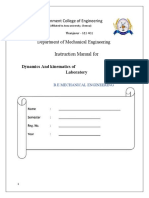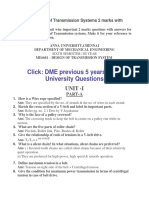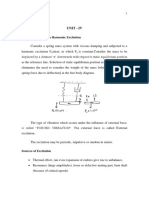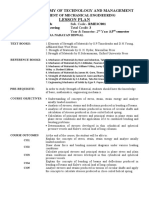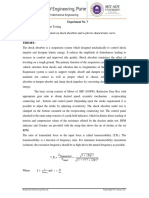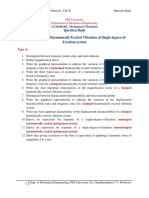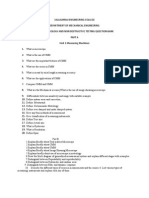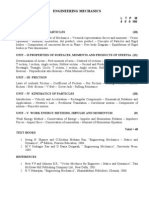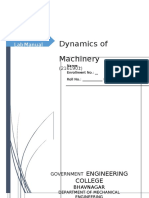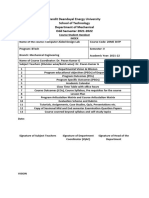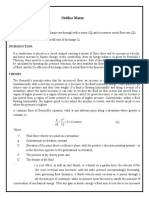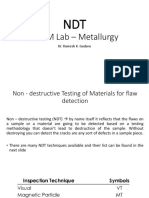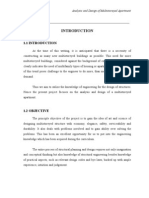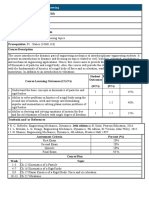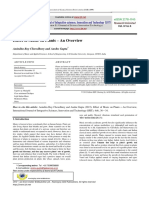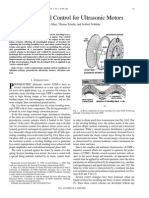0% found this document useful (0 votes)
324 views56 pagesDynamics of Machines Lab Manual
This document contains the laboratory manual for ME 304P Dynamics of Machines course. It includes 12 experiments related to dynamics of machines like studying undamped free vibrations of spring mass and rotor systems, determining natural frequencies, effects of gyroscopic couple, unbalance, whirling of shafts, characteristics of governors and jump speed of cam follower systems. The manual provides the aim, procedure, observations and calculations for each experiment. It will help students understand fundamental concepts of machine dynamics through hands-on experiments.
Uploaded by
Savan PatelCopyright
© © All Rights Reserved
We take content rights seriously. If you suspect this is your content, claim it here.
Available Formats
Download as PDF, TXT or read online on Scribd
0% found this document useful (0 votes)
324 views56 pagesDynamics of Machines Lab Manual
This document contains the laboratory manual for ME 304P Dynamics of Machines course. It includes 12 experiments related to dynamics of machines like studying undamped free vibrations of spring mass and rotor systems, determining natural frequencies, effects of gyroscopic couple, unbalance, whirling of shafts, characteristics of governors and jump speed of cam follower systems. The manual provides the aim, procedure, observations and calculations for each experiment. It will help students understand fundamental concepts of machine dynamics through hands-on experiments.
Uploaded by
Savan PatelCopyright
© © All Rights Reserved
We take content rights seriously. If you suspect this is your content, claim it here.
Available Formats
Download as PDF, TXT or read online on Scribd
/ 56

